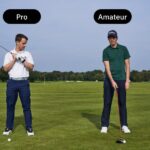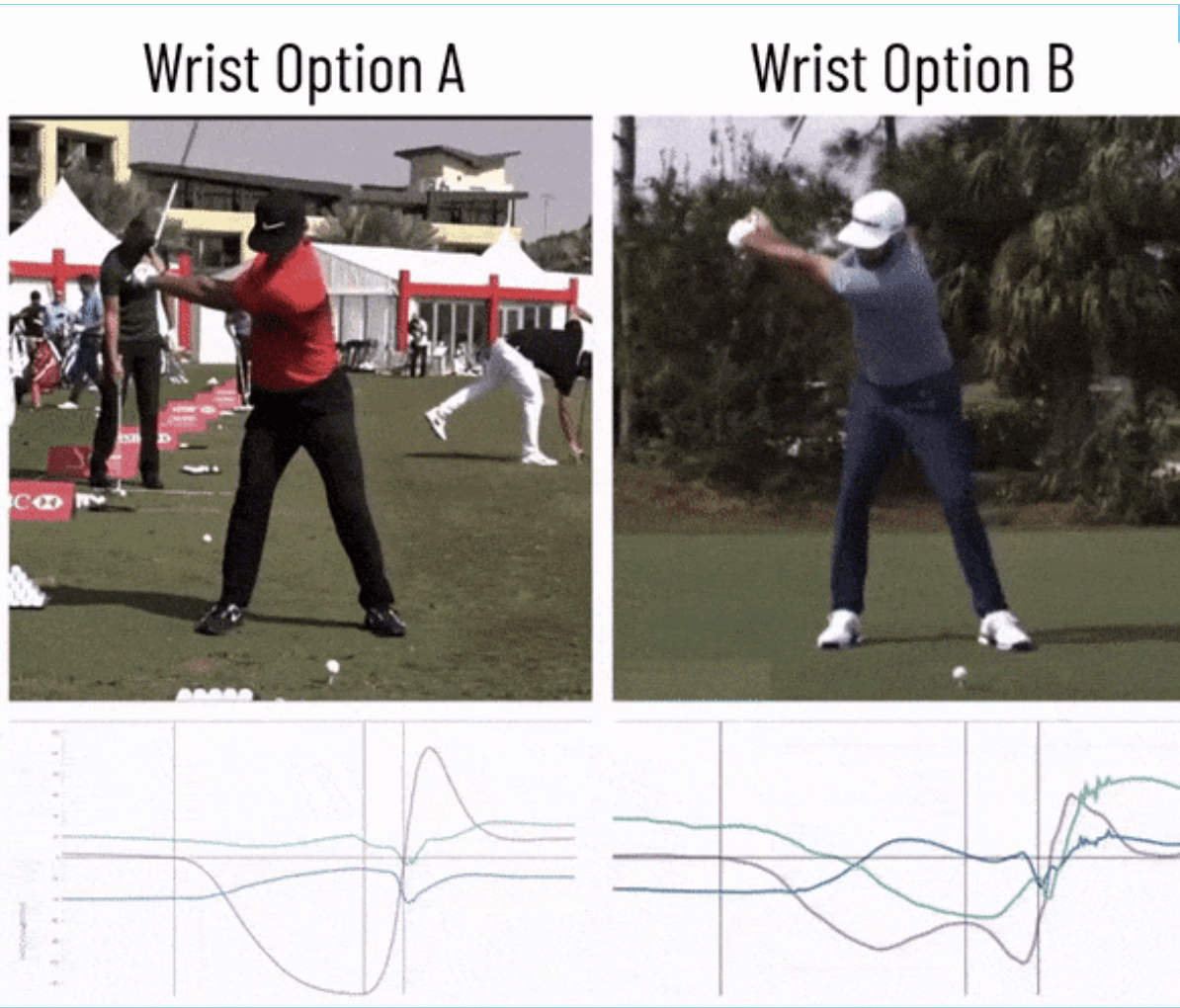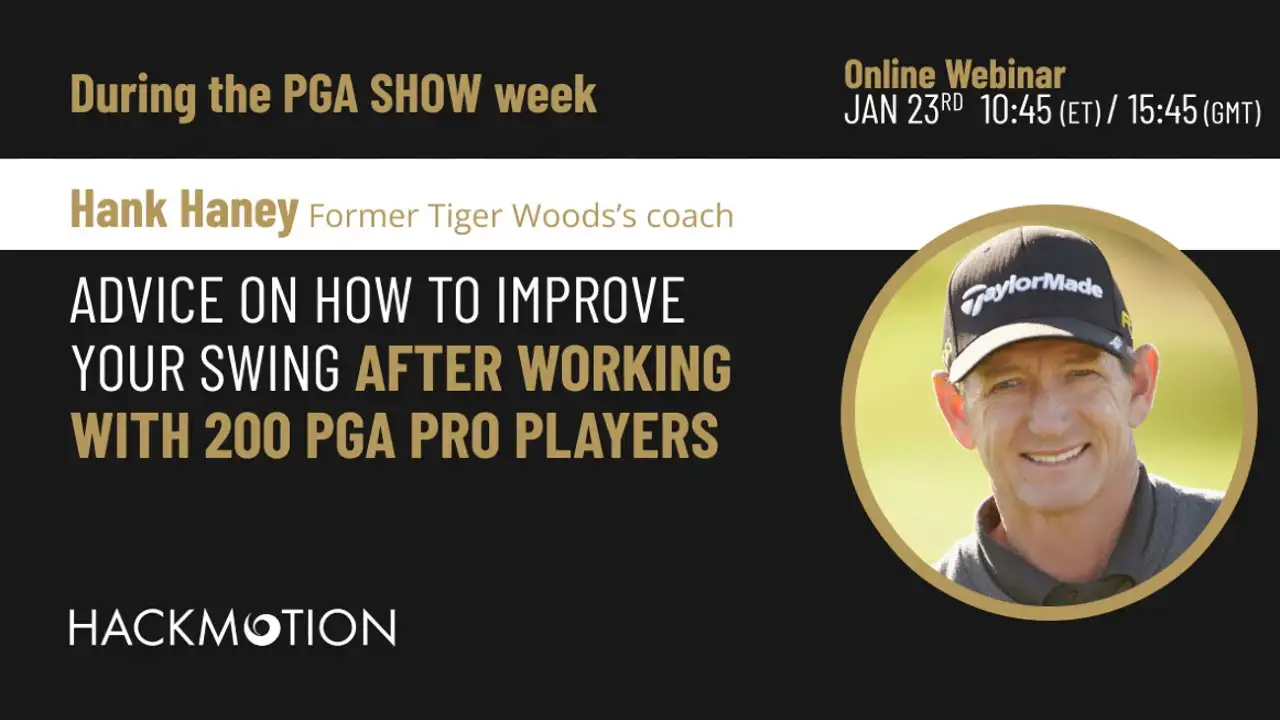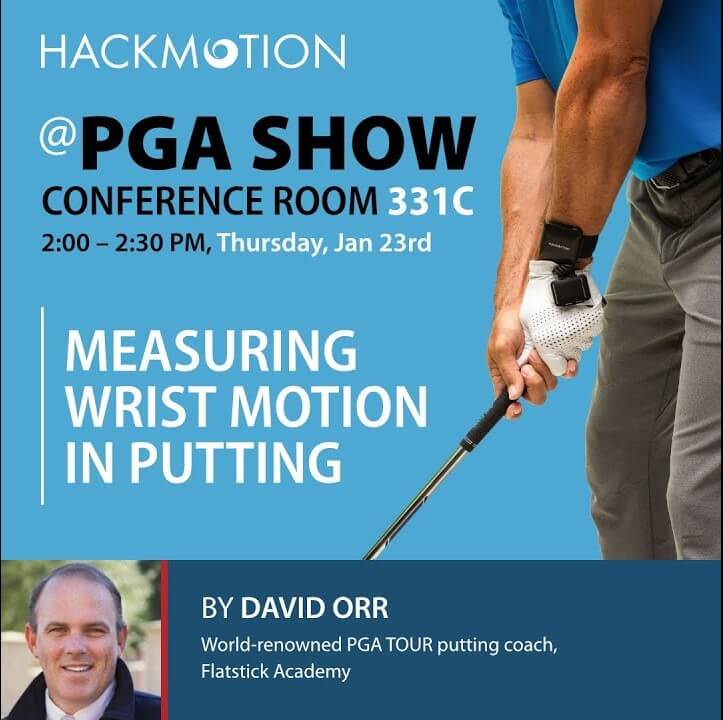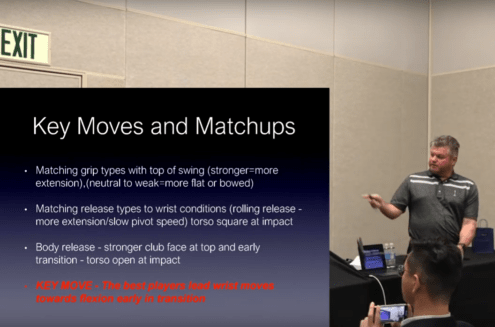The Dynamics of Wedge Play – Mark Blackburn & Layne Savoie
In wedge game, the player has to be very adaptive, as the environment will play a key role. Training hands and wrist motion is crucial for short game.
Great wedge players have ability to adapt the clubface and wrist angles to hit any shot needed. It is emphasized by PGA Coach of the Year Mark Blackburn
Watch two excellent coaches Mark Blackburn and Layne Savoie (founder of Wedgecraft) demonstrate the concept of Two Sided Spin Mountain. And learn the two crucial types of short game shots (high spin and low launch, low spin and high launch) all players need to master.
What Makes an Outstanding Wedge Player?
Top players have the skills to control their moves intentionally and adapt to the environment they are in.
Over multiple years, the co-founders of WedgeCraft – Layne Savoie and Dr. Rob Neal-have gathered 3D data on how leading players make their short game shots.
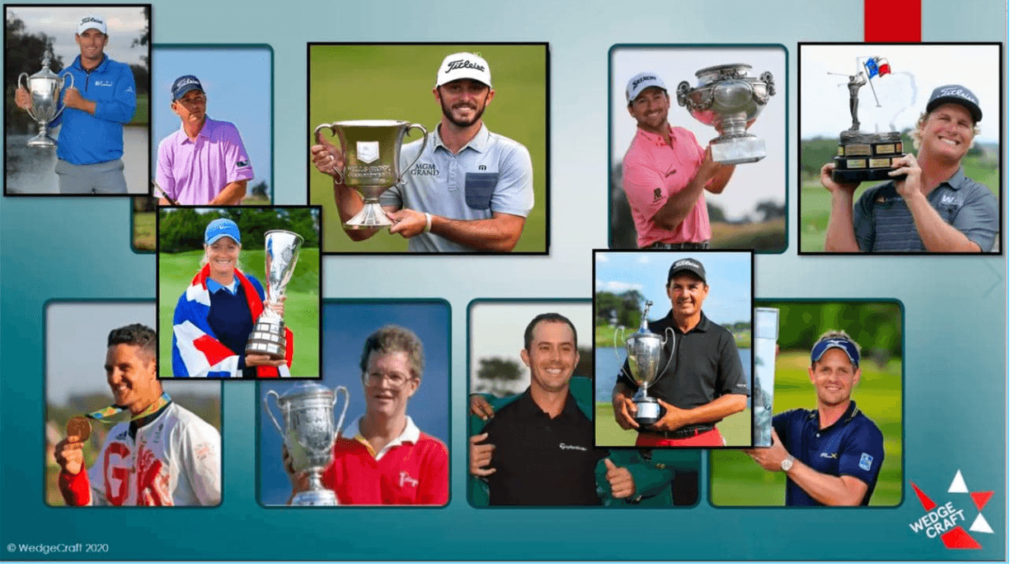
A skill set based on the following control variables was developed: attack angle, club speed, face angle, contact point, club path, shaft lean, and intellect.
Players should learn to control these variables to be able to perform a range of shots.
An essential skill that enables player to control most parameters of the swing is the ability to adjust hand and wrist motion.
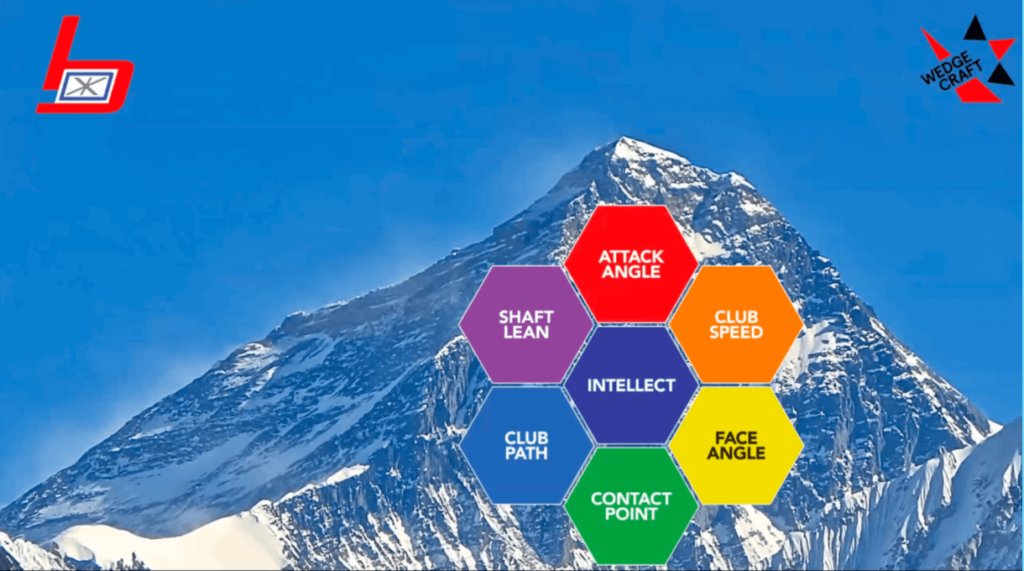
Learn the Two Types of Shots from 2-Sided Spin Mountain
The 2-Sided Spin Mountain represents two types of shots players need to master to increase their adaptability in the short game:
- 1. Low launch angle, high spin rate (usually longer distance) – GREEN ZONE
- 2. High launch angle, low spin rate (usually shorter distance) – RED ZONE
To master the both sides of Spin Mountain, the player needs to be able to change the impact environment, including wrist angles, to produce the desired launch angle and spin with the wedge.

Lead wrist mechanics of SHORT DISTANCE WEDGE (high launch, low spin):
Before impact, at shaft parallel, between positions P6-P7 wrist extension rapidly increases.
Extension (+) / Flexion (-)
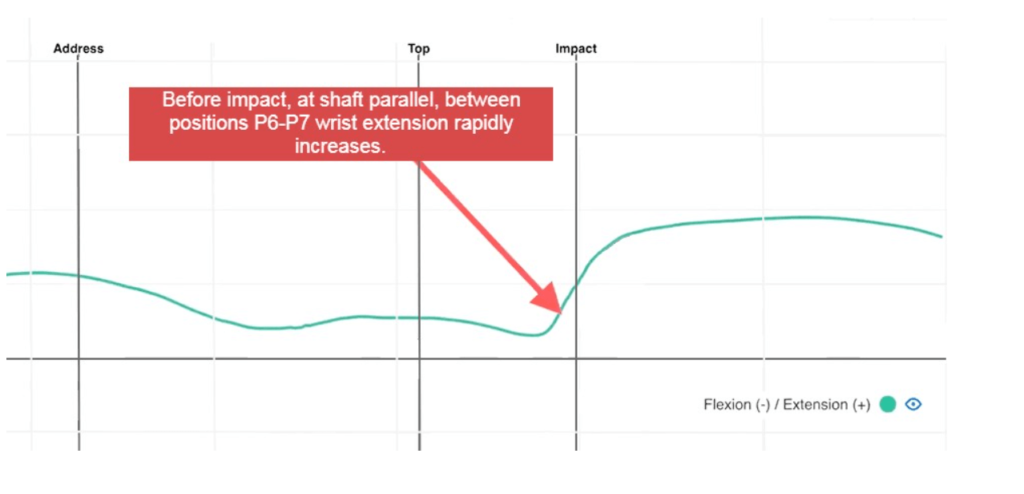
Full graph of wrist motion
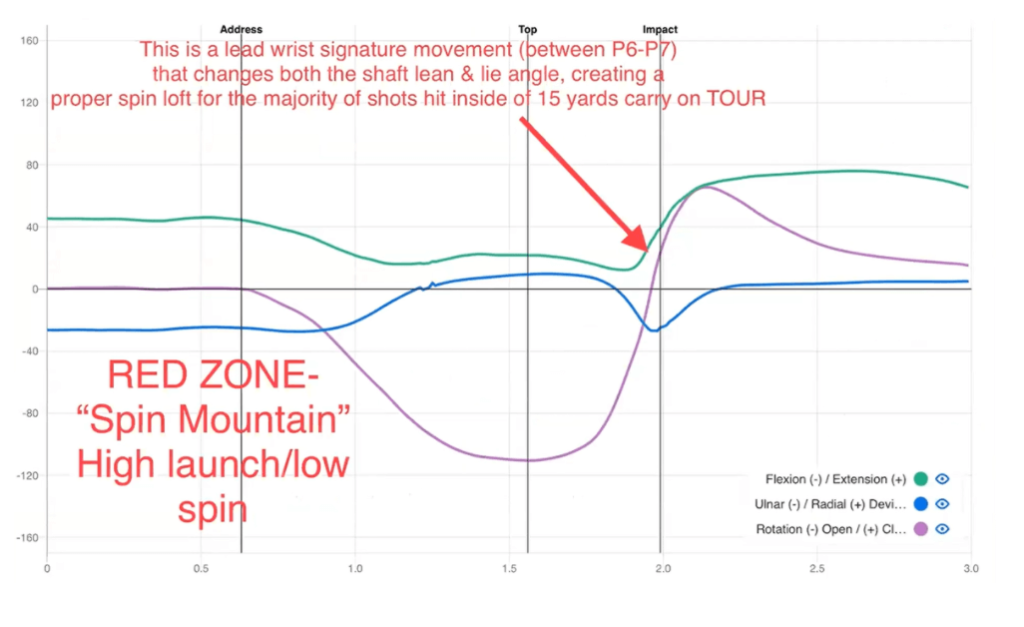
Lead wrist mechanics of LONG DISTANCE WEDGE (low launch, high spin):
Aim for a gradual movement towards flexion in transition and leading up to impact.
Extension (+) / Flexion (-)
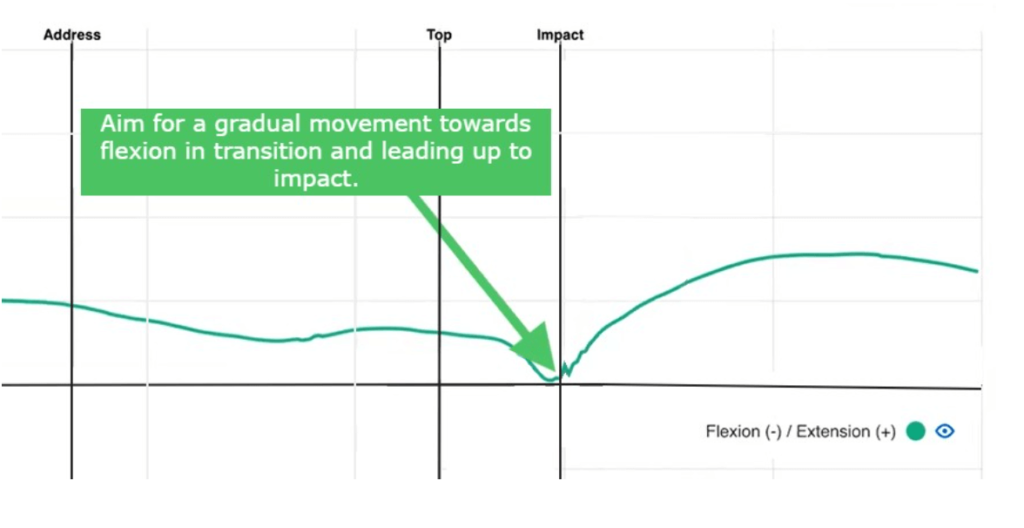
Full graph of wrist motion
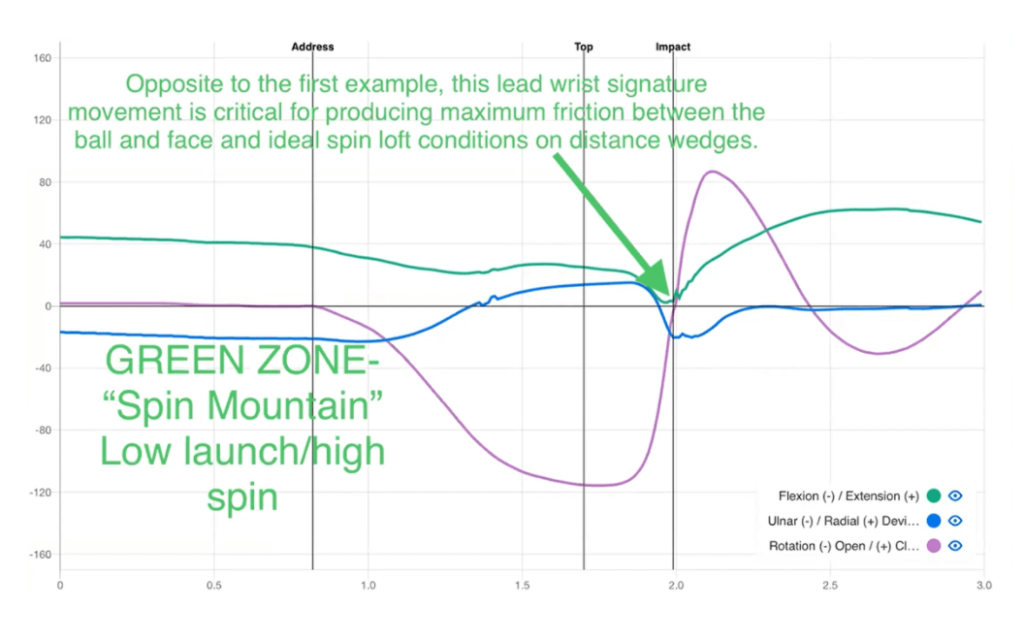
How to Master Both Types of Shots Using HackMotion?
Learn the wrist mechanics for both shots
Mark and Layne focused on wrist extension (cupping) and flexion (bowing). Start by learning and practicing this motion, and then move to radial/ulnar deviation and rotation.
Take a look at your graphs on HackMotionThe absolute values may differ, but aim for a similar pattern of the graph line. Focus on the green line – extension/flexion.
Use HackMotion biofeedback
Set a range of wrist extension/flexion as a benchmark and allow your body to learn the positions.
Learn different short game shots
Explore the wrist mechanics of 9 pitching and chipping shots here.


